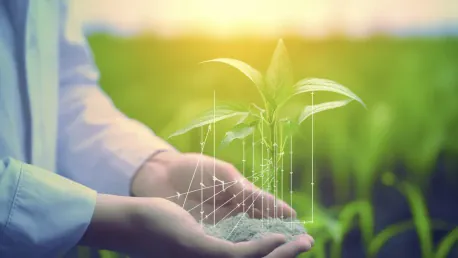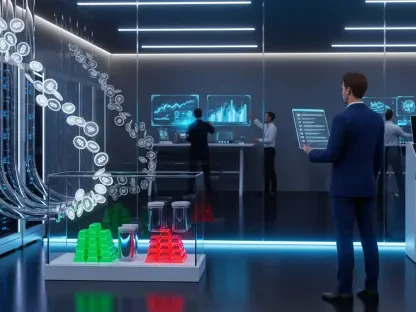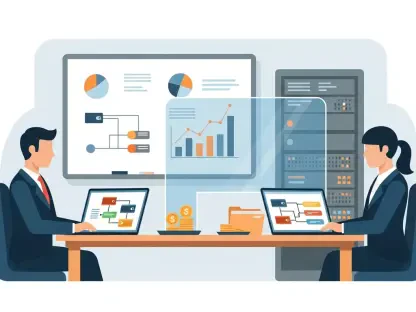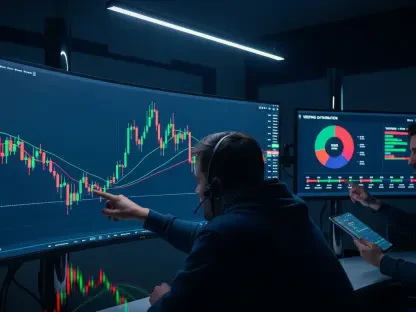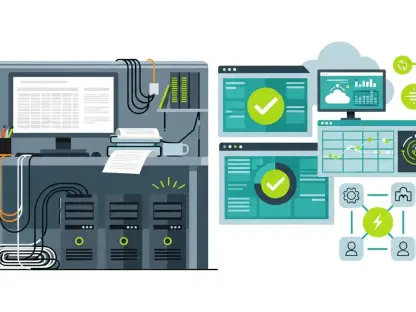In the evolving landscape of agriculture, New York farmers face a crucial decision: whether to embrace advanced agricultural technology or remain faithful to traditional farming practices. This dilemma pits the potential benefits of technological innovations against the risks involved, including data security and over-reliance on automated systems. The experiences of three farmers, Heidi Lott, Kristen DeMarree, and Brett Chedzoy, offer insights into the complexities and considerations faced by modern agriculturists.
Heidi Lott: Embracing Precision Agriculture
Heidi Lott operates a sprawling 2,600-acre crop farm in Waterloo, New York, and understands the value of thorough research before adopting new technologies. Lott’s farm employs a range of advanced tools, including RTK base stations and Climate FieldView, for precise planting and fertilizer application. These technologies have significantly enhanced her farm’s operational efficiency by ensuring precise resource use, ultimately leading to better harvests and reduced costs.
However, Lott emphasizes that partnering with technology providers requires a careful evaluation of the potential benefits and risks. Data-driven tools, while promising, must be scrutinized for reliability and data security. Despite these challenges, Lott remains optimistic about adopting tech innovations that enhance her farming practices without compromising data protection or overwhelming her with excessive information.
Kristen DeMarree: Optimizing Labor and Water Management
Kristen DeMarree manages the 200-acre Donald DeMarree Fruit Farm in Williamson, New York, where high-density plantings of fresh fruit are the norm. To optimize labor efficiency and manage water usage, DeMarree’s farm leverages AgriTrak. This system meticulously tracks various farm operations and labor data, allowing her to evaluate labor costs and productivity objectively.
For DeMarree, technology has been a game-changer in making informed decisions about apple variety profitability and labor deployment. The ability to analyze detailed data helps her make strategic adjustments, ultimately increasing the farm’s overall productivity. Despite some technological hiccups, such as issues with Bluetooth valve compatibility, DeMarree remains committed to integrating innovative tools that complement her farming practices and help her achieve her goals.
Brett Chedzoy: Balancing Tradition with Technological Caution
Brett Chedzoy, who runs a 1,000-acre grass-fed beef operation near Watkins Glen, New York, exhibits a more cautious stance on the adoption of agricultural technology. While recognizing the potential benefits of advanced tools like lidar scanning for forestry management, Chedzoy is wary of over-reliance on technology. His concerns extend to data privacy, fearing how companies might exploit farmers’ proprietary information.
Instead, Chedzoy emphasizes the value of traditional farming methods, leveraging his experience, intuition, and manual oversight. He remains skeptical of modern tractors loaded with electronics that can malfunction, causing operational delays. Despite his cautious approach, Chedzoy acknowledges that carefully selected technologies can offer tangible benefits when they are implemented alongside traditional practices.
Navigating Data Privacy and Security
A common concern among Lott, DeMarree, and Chedzoy is data privacy and security. The sheer volume of information generated by modern farms is staggering, with projections indicating significant increases in data points in the near future. This influx of data can be overwhelming without proper management systems in place.
For Lott, the convenience of uploading field data to the cloud aids in decision-making processes related to grain marketing, crop insurance, and variety selection. DeMarree, on the other hand, values the ability to assess labor efficiency and apple variety profitability through detailed data analysis. However, both farmers remain vigilant about their data’s security, ensuring they partner with trusted providers.
Striking a Balance
In the evolving landscape of agriculture, farmers in New York face a pivotal decision: whether to adopt advanced agricultural technology or stick with traditional farming practices. This decision involves weighing the potential advantages of technological advancements against various risks such as data security issues and the possibility of becoming overly reliant on automated systems. The experiences of Heidi Lott, Kristen DeMarree, and Brett Chedzoy provide valuable insights into the complexities and factors modern farmers must consider. Heidi Lott has seen success by integrating technology to enhance her farm’s efficiency, while Kristen DeMarree remains cautious due to concerns about data privacy and the dependence on high-tech solutions. Brett Chedzoy balances both worlds, using technology to augment traditional practices without fully abandoning them. Each farmer’s journey highlights the diverse approaches and considerations that are central to the current agricultural landscape. As they navigate these choices, they help paint a broader picture of how farmers today must adapt to maintain productivity and sustainability amidst a rapidly changing environment.
